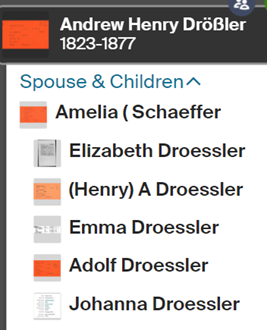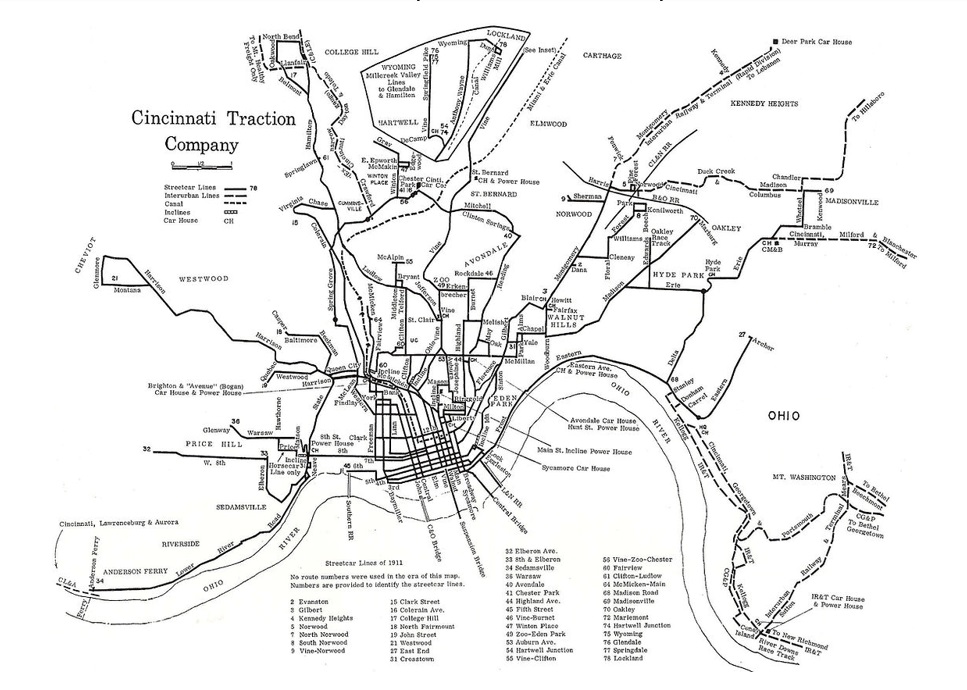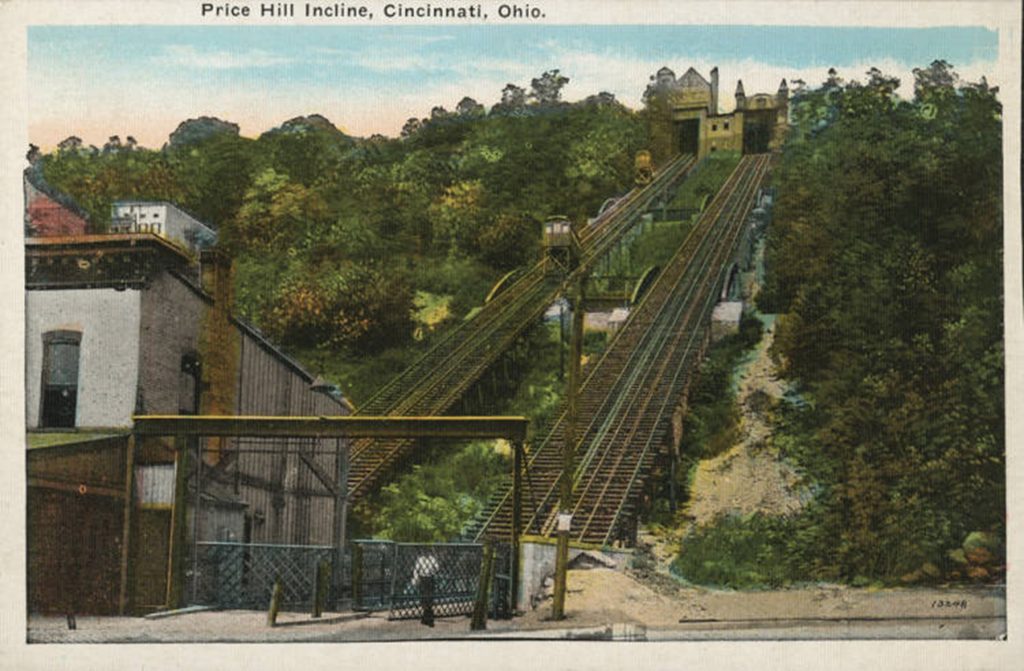In the year 1852, Andreas Drößler and his wife, Amelia (née Schaeffer), made the choice to depart from Berlin and seek a new life in America. At the time, their daughter Elizabeth, called Lizzie, was three years old. Amelia carried their unborn son, Henry, who would sometimes be known by his middle name, Godfrey.
Andreas was commonly addressed as Andrew or Andy, while Amelia was known by a variety of nicknames such as Emma, Mollie, and Mary. This decision to emigrate marked a pivotal moment for the Drößler family, reflecting the broader waves of European migration to the United States during the mid-19th century.

Several factors likely fueled Andreas Drößler and Amelia’s decision to emigrate. A burgeoning population in Berlin likely intensified competition for land, while religious persecution and recent crop failures added to their challenges. The promise of opportunity in America beckoned, offering a fresh start they couldn’t find at home.
In 1852, the political climate in Prussia grew increasingly precarious. The government, led by Friedrich Wilhelm, faced rebellion and unrest in Southern and Western regions, prompting the conscription of men into military service. Simultaneously, diplomatic tensions with Switzerland escalated, heightening fears of impending conflict. Friedrich Wilhelm’s decision, supported by the German Confederation, to abolish the established constitution signaled a dramatic shift in governance, further motivating families like the Drößlers to seek refuge elsewhere.

Berlin 1850s
The Drößler family likely journeyed from Berlin to Bremen by train, utilizing a route established in the 1840s. Upon reaching Bremen, they would have navigated approximately thirty miles upstream along the Weser River via crowded barge to reach Bremerhaven, the port city. This arduous leg of the journey typically lasted three days. Upon arrival in Bremerhaven, they awaited passage on a ship bound for America.
The transatlantic voyage would have spanned between forty and ninety days, as steamships had not yet been invented during this period. The family, like many others of their time, braved the vast ocean on sailing vessels, enduring weeks of uncertainty and anticipation before reaching their destination across the Atlantic.
While an exact immigration record for the Drößler family has not been uncovered, the 1900 U.S. Federal Census provides valuable insights. According to this record, their son Henry Droessler was born in Prussia in 1853, yet it also indicates that he emigrated in 1852. This discrepancy suggests the possibility that Amelia, pregnant with Henry at the time, embarked on the journey with Andreas, and Henry was born en route, possibly crossing into the new year.
The notion that Henry’s birth was recorded as occurring in Prussia despite being at sea aligns with historical practices, where births during travel were often attributed to the last place of departure. It’s plausible that the family considered Henry’s birthplace as Prussia since they had not yet reached their intended destination in America.
Upon arrival in the United States, they likely docked at ports such as New York or Baltimore, common entry points for European immigrants during the mid-19th century. From there, they would have continued their journey by train, eventually settling in Cincinnati, a burgeoning city in the American heartland.

Andreas does not appear in the Cincinnati Williams Street Directory until 1856, when records indicate he resided as a boarder at Findlay and Hamilton. This corresponds with the 1860 Federal Census, which documents Andreas and his family residing in the north half of the 16th Ward, sharing accommodations with Mary Brickmire, an elderly woman, and her son William, both of whom did not list occupations.
In terms of occupation, Andreas was identified as a painter, a trade that his son would later follow. His work was centered around Race Street, reflecting the vibrant commercial and industrial landscape of Cincinnati during this period.


The spelling of the surname for this family was Drößler, which translates to Droessler. However, as shown in the census record above, it was often misspelled.
Did they live someplace else before 1856? They migrated in 1852/53. There is an 1853 marriage record for Andrew Droessler and Amelia Deahm from Montgomery County, Ohio (Dayton.) When seeing this I wondered if his first wife had died during emigration, and this was a second wife. However, Andrew’s youngest daughter’s death certificate specifically listed her mother as Amelia Schaeffer. So, this could not have been the case. A second tree for Andrew Droessler and Amelia Deahm will be created to find out who they were, as their similar names and proximity to Cincinnati are a big coincidence. Street directories for New York and Baltimore could be checked to see if there was a listing before Cincinnati, however, it could be that they were in Cincinnati and just not yet listed in the directory.
By the time Andrew and his family were situated in Cincinnati, the subject of slavery was becoming very contentious. In 1856, in Chapter VII of her book The Englishwoman in America, Isabella Lucy Bird painted the following picture, which distinguished that Cincinnati was a far different place than across the river in Kentucky:

The Englishwoman in America by Isabella Lucy Bird
The Civil War began in April of 1861. Ohio was a free state, and most residents were patriotic to the Union. The river served as the physical Mason-Dixon line and people lived in freedom once they crossed it.
In 1861, the Cincinnati Williams Street Directory did not list any individuals with the surname Droessler or similar variations. However, a newspaper article from that period reported on an incident involving a resident of Cincinnati named Andrew Dresler. This individual expressed vocal support for Jefferson Davis and the Southern Confederacy, which led to a confrontation resulting in his being knocked down and sustaining a head injury. Subsequently, Dresler was taken into custody and held overnight.
The altercation occurred in Barlow’s Corner, a lively area located across the river in Kentucky. While it cannot be definitively confirmed that the individual mentioned in the newspaper article was Andrew Droessler, the absence of other individuals with a similar surname documented in the area around that time suggests the possibility that it may indeed refer to him.

If the individual in question was Andrew Droessler, his support for the secessionist cause might appear perplexing for a recent immigrant to a northern state. However, such alliances were not unprecedented. In fact, numerous immigrants, including some of German descent, enlisted in the Confederate Army. One notable example is George Atzerodt, a German American who was tried and hung for his role as a co-conspirator in the assassination of President Abraham Lincoln.
Coincidentally, there are individuals with the Droessler surname buried in Anrode, Unstrut-Hainich-Kreis, Thüringen, the same region from which George Atzerodt originated. Nevertheless, this location lies over 300 miles away from where Andrew resided, and no familial connection is suspected between them. Such historical coincidences highlight the complex and diverse backgrounds of individuals involved in significant events like the American Civil War.
As Andrew grew his house painting business, the family moved first from the 12th ward to the 16th and then to the 8th ward of Cincinnati.

Andrew and Amelia expanded their family with the birth of three additional children: Emma in 1861, Adolph in 1865, and Johanna in 1867. The significant gap between Henry’s birth and the subsequent births of his siblings is notable, raising questions about potential infant mortality within the family.

Unfortunately, comprehensive birth and death records for Cincinnati were not established until 1865, and even then, the records for that year were incomplete. Additionally, census records from 1860, 1870, and 1880 did not differentiate between the total number of children born to the mother and the number of living children, unlike later census records. Therefore, determining whether there were additional children born to Andrew and Amelia required consulting burial records, as these might provide insights into any children who did not survive infancy. The records where the family is buried have been thoroughly checked and no other children were found.
The Williams Street Directory of 1865 listed “Dressler, Henry painter h. 337 Cutter.” This was the only indication that Andrew’s middle name was likely Henry. The family remained at this address for years to come.
In the subsequent year, the directory listed Andrew as “Droessler, N.D.,” which appears to be a typographical error for “Andy.” Despite this, his address remained consistent at 351 Cutter throughout his life from this point onward.

By 1870, Andrew’s son, Henry, had begun his apprenticeship and together they expanded the family business. Interestingly, Henry’s name appeared as “Andrew” that year, indicating a possible clerical error, and he served as an apprentice to his father, Andrew, who worked as a house painter. Subsequently, Henry’s name was consistently listed as either Henry or Henry G.
During this same year, the census suggests that Andrew obtained U.S. citizenship, although no corresponding naturalization record could be located in the database.
Additionally, in 1870, Andrew’s older sister, Lizzie, entered into marriage with Charles Korzenborn, who pursued a career as a cabinet maker.

Henry had a penchant for dancing as a pastime. In November of 1875, he attained the position of Chairman within the Chester Dancing Association. While the exact style of dance performed by the association is not specified in the article, it is probable that their activities took place in Chester Park. Situated north of Spring Grove in Winton Place, and adjacent to the Winton Place Station, Chester Park served as a popular resort destination.
Resembling the entertainment offerings of Coney Island, Chester Park boasted a variety of shows, attractions, rides, and swimming facilities all centered around a picturesque lake.


In 1876, there are no entries for the Droessler family in the records. However, Henry W. Dressler, a Range Maker located on 4th Street, appears consistently listed. It’s notable that Henry’s daughter, Sophia, was married to Alfred, the son of Louis Gross, who also worked as a Range Maker.
Tragically, Andrew passed away on Christmas Eve in 1877 due to Tuberculosis, then commonly referred to as phthisis pulmonary or consumption. He was laid to rest in Carthage Road Cemetery, which is now known as Vine Street Hill Cemetery. At the time of his passing, Andrew was fifty-six years old.



Henry persisted in his occupation as a painter and maintained his residence at 351 Cutter Street alongside his widowed mother and siblings. In 1880, he married Mary Vinup, and the couple continued to reside at the same address thereafter.
Mary was born in Dillsboro, Indiana. Her family had migrated from Börninghausen, which was a place in North-Rhine, Westphalia in western Germany.

Henry and Mary welcomed their first child, a daughter, in 1881. Unfortunately, she passed away before the 1900 census, and her name remains unknown. Following this, they were blessed with twin boys, Charlie and William, born in 1882. Subsequently, they had five more children: Mollie, Adolph, Frederick, Sophia, and Georg.

After her husband died, Amelia’s children all resided with her, except for her eldest, Elizabeth, who had married Charles Korzenborn. Elizabeth and Charles, along with their two young daughters, shared a residence with Charles’ brother, William, at 120 Everett Street. Both Charles and William were cabinet makers.

Tragically, Amelia passed away in 1885 due to a heart attack. She, like her husband Andrew, died at a relatively young age – Andrew at 56 and Amelia Mary at 61. Although both were buried at Carthage Road Cemetery (now known as Vine Street Hill Cemetery) according to their death records, an exhaustive search of burial records has not uncovered their names. Andrew and Amelia were blessed with five children, and they were also fortunate to have twenty-two surviving grandchildren, all residing in Cincinnati, Ohio.
More about their children:
Lizzie 1850-1923 – 7 children
Henry 1853-1904 – 8 children
Emma 1861-1937 – 6 children
Adolf 1865-1890 – no children
Johanna 1867-1955 – 4 children
Lizzie and Charles Korzenborn had five daughters and two sons. They were Rosa, Clara, Caroline, Charles, Laura, Matilda, and Louis. Lizzie began divorce proceedings against Charles in February 1915 due to lack of support and brutality. They were sixty-five years old. However, the case was rejected by a judge a year later.


Emma, also known as Mary Amelia, was married to Frank Beiderhake. They resided on Kindel Avenue, situated near Linn and Central Streets. Frank passed away in October 1906 due to pneumonia following an explosion. While several explosions were reported in newspapers during that month and year, Frank’s name was not specifically mentioned in the available records, so specific details are not known.
Subsequently, Emma remarried William Meyer. In total, she had six children – two with Frank and four with William. Her children were Rose, Henry, Unknown, Molle, Marcella, and Maggie.
Adolf tragically succumbed to pneumonia in 1890 at the age of 25. He had occasionally contributed to the family painting business and worked as a clerk or “cash boy.” He was unmarried. Adolf was laid to rest at Vine Street Hill Cemetery. His burial record was helpful in determining relations within this family.
Henry married Mary Vinup and they had eight children, the first dying in infancy. They were Unknown, William, Charles, Mollie, Adolph, Frederick, Sophia, and Georg. Henry’s son, William Droessler, aged 5, passed away from pneumonia in 1891. He was the twin brother of Charlie.
Johanna married Fred Rust and they had four children who were Mollie, Fred, George, and Louis.


The siblings resided at either 351 Cutter or 145 Wade. Their living situation was characterized by frequent moves, with instances where they occupied both houses within the span of a single year.
Henry continued the family painting business that his father started, and he relocated to the Riverside suburb in about 1895, initially residing with his brother-in-law, Charles Korzenborn, before establishing his own residence on Hillside Avenue. Situated in the Ellerslie Subdivision, this neighborhood occupied a position near the summit of Price Hill, affording views overlooking River Road. Henry and his siblings remained rooted in this community.

For transportation downtown, they likely utilized the 34 Streetcar line to access the Price Hill Incline. The Riverside Area gained popularity as a suburban enclave due to its elevated position above the industrial basin. Henry’s children continued to reside in the area after his passing until they married.
Shortly after moving to Hillside, Henry found himself entangled in a workplace accident that nearly claimed his life. A coworker intentionally knocked the ladder out from under him, resulting in severe injuries. The perpetrator fled the city and eluded capture.
Tragically, Henry succumbed to Tuberculosis at the age of 50 on May 11, 1904. His sisters all lived to be in their 70’s.



The corner of Clyde St. and Hillcrest Avenue today.






The Cincinnati Post Cincinnati, Ohio • Sun, Feb 19, 1905 Page 8

In the past, there was an annual reunion of the Droessler and Haarmeyer families. Henry’s wife’s sister was married to a Haarmeyer. So, in the article below, Charles, the son of Henry, was visiting his aunt’s family when he died.

The Cincinnati Enquirer Cincinnati, Ohio • Mon, Mar 31, 1930 Page 26
